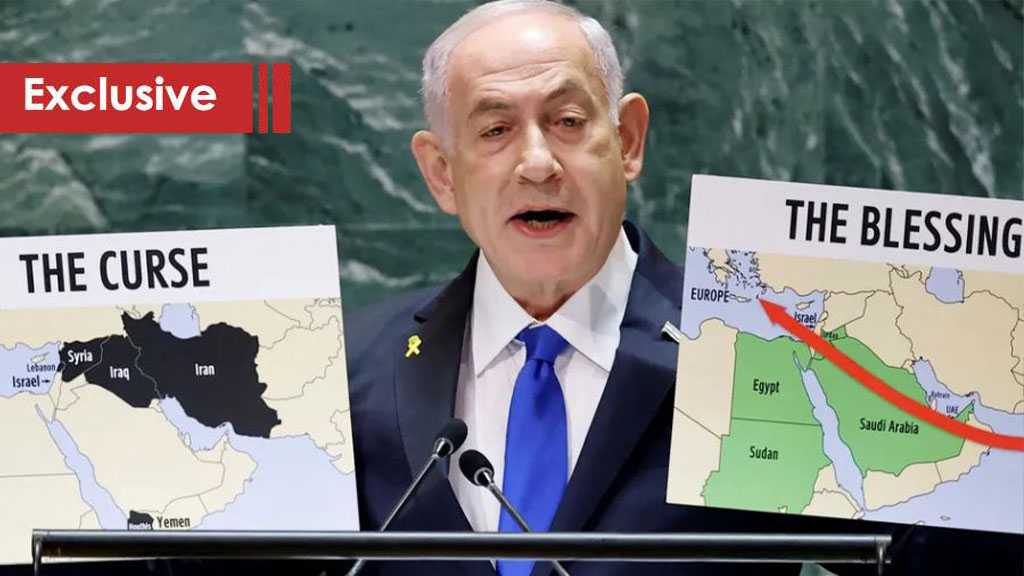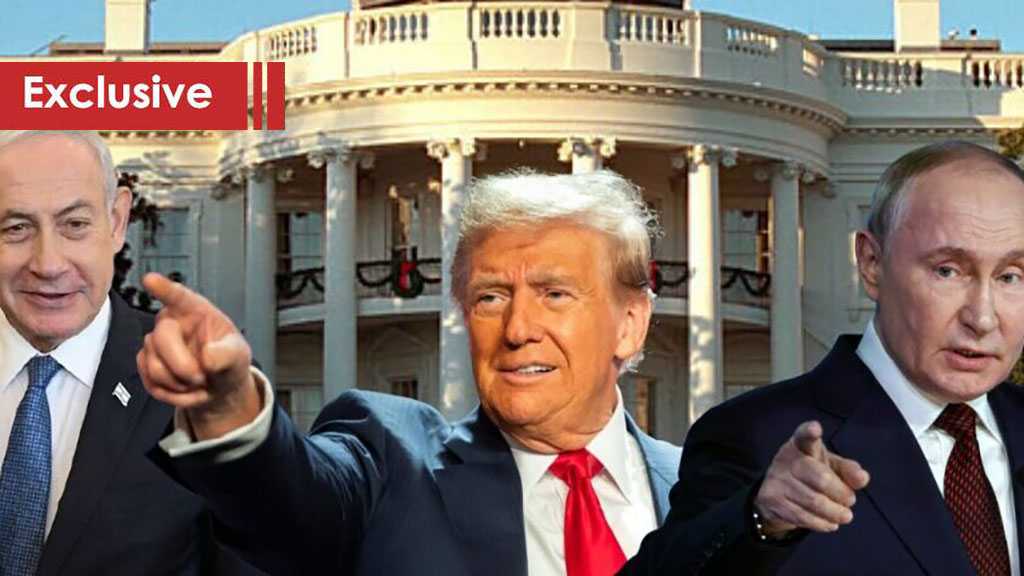Netanyahu’s “Greater ‘Israel’” Project: Exaggeration and Pressure or a Serious Reality?

By Charles Abi Nader
Recently, most observers in the region and around the world have paused at Netanyahu’s latest proposal concerning the “Greater ‘Israel’” project. While some see it as having no chance of success whatsoever, others regard it as mere fearmongering and a pressure tactic to achieve different goals. Yet, there are also those who do not rule out the seriousness of the proposal and its potential for success.
So how can each of these viewpoints be approached? And what are the possibilities and elements for the success of this “bombshell” project, which the enemy’s prime minister has thrown out at this exceptional moment the region as a whole is experiencing?
To begin with, and before delving into the various approaches to the project, it is useful to shed light on its details, especially regarding the territorial scope it encompasses.
The project is championed by the hardline “Israeli” right, which is today allied with Netanyahu. It was first put forward in 2016 by Bezalel Smotrich, leader of the extremist ‘Jewish Home’ party, when he was a member of the Knesset. In a television interview at the time, he stated that “‘Israel’s’ borders should extend to include Damascus, along with the territories of six Arab states—Syria, Lebanon, Jordan, Iraq and parts of Egypt and Saudi Arabia—in order to realize the Zionist dream from the Nile to the Euphrates”.
Practically speaking, supporters of the extremist Jewish right who embrace these biblical beliefs draw on scriptural texts—most importantly those found in the Book of Genesis—alongside voices within the Zionist movement calling for the expansion of “Israel’s” borders to encompass wide parts of the Middle East.
Practically, those who believe the project has no chance of success—even the slightest—base their view on several serious and concrete factors, namely:
• It is impossible for the entity’s rulers today to possess the capacity to implement such a hellish and unrealistic scheme, given the many internal challenges they face as well as the pressures from their adversaries.
• They continue to struggle against Palestinian resistance in Gaza, with no possibility of achieving their objectives despite resorting to genocide, starvation, and siege tactics, as well as criminal practices aimed at forcing displacement.
• On another front, the entity has failed to contain the Yemenis or prevent them from supporting Gaza—whether through their wide-ranging naval maneuvers or their deadly strikes deep into the entity and against its vital infrastructure.
• The occupation is also faltering in its attempts to secure the Syrian arena. Despite repeated incursions and aggressions, success seems unlikely, for the shifting sands of Syria always hold surprises.
• Moreover, despite its attacks, pressure, and heavy threats against Lebanon, the entity does not appear capable of imposing its agenda of subjugating and coercing the country—especially its foremost goal of disarming the Resistance [Hezbollah].
As for those who view the “Greater ‘Israel’” project as nothing more than fearmongering and a pressure tactic to achieve other goals, they argue that Netanyahu and his current hardline government are deliberately inflating their rhetoric. By threatening to occupy vast areas of Arab states’ territory and giving the idea an aura of seriousness in both media and politics, they seek to generate alarm. The aim is to pressure concerned parties—whether in the targeted states or in the Western international community—into rushing toward them and striking deals. The trade-off would be abandoning the project in exchange for other gains: territorial, perhaps in the West Bank or in the Syrian Golan [whether occupied or not], as well as political, centered on expanding the circle of states normalizing ties with “Israel”, in addition to securing major political concessions from the Palestinians in Gaza, Al-Quds [“Jerusalem”] and the West Bank.
As for those who do not rule out the seriousness of the proposal and its potential for success—and who view it as a project with a considerable chance of materializing—they argue that Netanyahu and his hardline team turned to advancing this plan only after succeeding in stripping “Israel’s” adversaries of their deterrent capacity. They believe this erosion of deterrence has already occurred: first, when the axis of resistance lost the Syrian arena, which once served as a central hub linking its various fronts; and second, when Hezbollah lost the level of deterrence and balance of power it had long maintained in confronting the “Israeli” occupation.
From this perspective, given the range of views and differing assessments regarding the chances of success and feasibility of the Greater “Israel” project, the idea that the proposal is merely fearmongering and a pressure tactic aimed at achieving other objectives appears closest to reality and truth.



